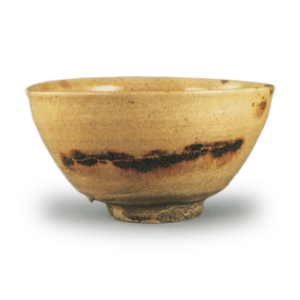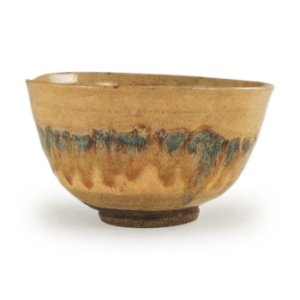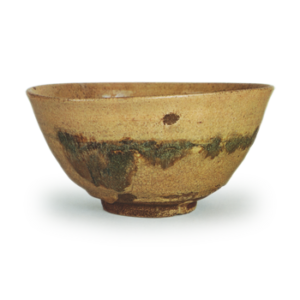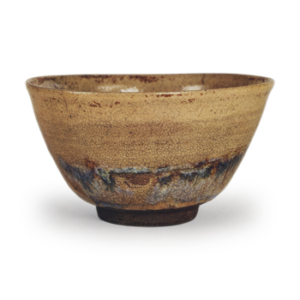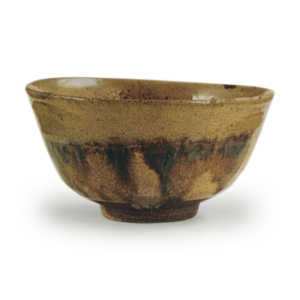Looking at the development of ceramic paints in the process of pottery production, we can see in colored earthenware that black, white, red, and other pigmented smears were painted on unglazed ware at first, but there is no need to specifically discuss this as ceramic paints. Today, the concept of ceramic paints can be broadly divided into two types: underglaze high-fired paints and overglaze low-fired paints. Of course, there are underglaze low-firing paints, which are stable only at low temperatures, and overglaze high-firing paints, which produce their painting effect only at or near the melting point of the glaze, but these are all included in the above two categories, and the range of their application and benefit is narrow and exceptional.
The use of underglaze flammable paints for ceramics shows the progress of ceramics making technology. In China, it began in the Song dynasty (960-1279), and in Korea, it originated in the Yi dynasty (1392-1392). In Japan, the use of underglaze pigments began in the late Muromachi period (1392-1573), and the use of iron oxide to produce blackish-brown colors is similar to Shino ware, but the introduction of Chinese Gosu in the early Edo period led to the use of blue. After Ri Sanpei perfected white porcelain in Arita, it became popular under the name of “Seika” (blue flower) because the coloring of gosu was most brilliant. In 1867 (Keio 3), Zuihoya Uzaburo purchased cobalt oxide along with overglaze pigments from France and returned to Japan. Later, in 1869 (Meiji 2), these two were invited to Arita to share their knowledge. The following year, Wagner was also invited to Arita to promote Arita’s pottery industry, and he mixed cobalt oxide with Nakataruyama clay to improve the deposition of the base. Earlier, he applied a thin layer of white painted clay on the surface of the base to prevent the gozu from dissipating. This method of using cobalt oxide in Arita was soon introduced to Kyoto and Seto, and from around 1885 or 1896 (Meiji 18 and 19), Chinese gosu and sand painting were discontinued and cobalt oxide was frequently imported from Germany, and green color with chrome and light black color with uranium were also used and imported. The beautifully colored Asahi ware created by Wagner and Toyotachibana Ueda around 1887 was glazed with borax, silicate, zinc, lime, and a small amount of lead, but under this glaze the colors of the paints were good only for tobi and black, but poor for yellow, rouge, and green, so the amount of zinc was reduced and that of lead increased to obtain good colors. To prevent the glaze from flowing, magnesium was added, which solved the problem of the paint not adhering to the substrate and peeling off together with the glaze, which caused discoloration if more flux was added.
This study of the correlation between glaze and paint later became an extremely valuable resource in the manufacture of paints. At this time, sea-blue pigments became popular in the Mino area, and those produced by Yamamai Eguri-Ten were used extensively. Around 1893 or 1894, Asukai Kotaro discovered that a mineral obtained from a mining company in Takayama, Ena-gun, Mino (Nakatsugawa City, Gifu Prefecture), produced a yellow color when used in underglaze porcelain pigments. Terauchi Shinichi, who was involved in the test, named it Asukai Yellow, probably because yellow underglaze porcelain paint was a world-famous discovery. In the spring of 1899, Yutaro Kato exhibited a porcelain vase with a design of birds singing in the rising sun at an exhibition of the Bijutsu Kyokai (Art Association). The details, however, are not known because they were kept secret and not communicated. It is also said that Seifu Yohei used gold to produce the light red color at this time. Cobalt oxide, which had been used since the early Meiji period, was widely used because it was stable, clear, and inexpensive, whereas Chinese gosu tended to fade at high temperatures above S.K12. After that, artificial gosu was used. However, during the Taisho period (1912-1926), there arose a tendency to deny the vividness of artificial gosu and to rejoice in the rich colors of Chinese gosu. Shunichi san birch saw river
In China, red painting began in the Song dynasty (960-1279) and reached its peak in the late Ming and early Qing dynasties, but it did not develop in Korea. In Japan, after the underglaze pigment gozu was used in the early Edo period, Sakaida Kakiemon of Arita heard about the Chinese five-color gold and silver technique and created red and other colors for overglaze painting, which marked the beginning of the use of overglaze pigments in Japan. Since the main color was red, it was called akae (red painting), and it was introduced to Kutani in Kyoto, where masters such as Ninsei emerged. Later, this five-color technique was widely spread throughout the pottery industry under the name Nishiki-te or Kinrande (gold brocade), while underglaze painted wares were called Some-tsuke. In 1874, Tanzan Rikuro first introduced suikin (water gold) from Austria, which was imported from around 1884 or 1885, and the export of gorgeous gold brocade porcelain with gold, silver, and five-colors became more and more prosperous, As the export of gold, silver, and five-color gold brocade porcelain became more and more prosperous, the amount of water gold used in Awata ware in one year at that time reached 50,000-60,000 yen. Imports of foreign paints were called Western-style paints, while Japanese overglaze paints were called Japanese-style paints, and imports of Western-style paints gradually increased. However, all of them were small-scale, and only a few types of paints were produced, mainly red, and the quality was not very good. In 1914, World War I broke out and imports of foreign products ceased, and the demand for ceramics and porcelain increased dramatically, and so did the demand for paints. The production of paints such as BERI-AKA, KAIHEKI, and OKA-RURI not only satisfied domestic demand for paints, but also reached such a level of prosperity that they were even exported to China. The red, Shoenko, Umibeki, and Okaruri were considered superior to foreign products, and only a few types of navy blue, azure blue, hiwa, and coral were considered to be slightly inferior. The overglaze paints used today are red, white, black, sky, green, blue, navy blue, hiwah, enko, marron, and several hundred others. They are applied by glue-soluble, oil-soluble, rubber stamping, lacquering, lithographic transfer, screen transfer, and other methods at firing temperatures between 650 and 800 degrees Celsius. In the past, pinewood brocade kilns were used for firing, but since the beginning of the Showa period (1926-1989), painters specializing in export products have mainly used electrically heated kilns, and recently tunnel kilns using heavy oil or liquefied gas have also been used.
The most important factor in the manufacture of overglaze paints is the composition of the frit, which previously consisted mainly of borax, but this was not good because it caused poor brushwork and fading. However, because of its lead content, when the baking temperature was insufficient, the lead content would leach out due to erosion from the 4% acetic acid solution, violating Article 4 of the Ministry of the Interior’s Ordinance on Control of Food and Beverage Utensils. This is why lead-free glazed overglaze paintings were often used in the past. This led to research into lead-free overglaze paints, and in the early Showa period (1926-1989), a paint made by adding 20% coloring agent to a frit consisting of 30% silica stone, 15% barium carbonate, 13% zinc oxide, and 42% borax was released, but it was not widely used due to drawbacks in brushwork and coloration. However, it was not widely used due to its drawbacks in terms of brushwork and coloration. However, lead-free overglaze paints had remained a problem in the ceramics industry since the lead-poisoning problem of 1912 (1907), and the Gifu Prefecture Dachi Overglaze Painting Improvement Association Research Institute made efforts to study this issue and gradually obtained superior products. The Ceramic Research Institute also studied lead-free overglaze enameling using bismuth, and announced the results in 1923 (Taisho 12). In the early Showa period (1926-1989), Honjo Sakae succeeded in producing Enko, maroon, black, navy blue, selenium red, and other paints for transfer printing, which had previously been imported, and supplied products superior to imported paints. The production of paints in Japan was halted due to the cessation of production of ceramics during World War II, but production of paints resumed with the revival of the ceramics industry after the war, and with the increase in exports of ceramics, the production volume exceeded the prewar level. When the problem of lead poisoning of ceramics exported from Japan arose in Germany in 1952, Honjo Sakae developed acid-resistant paints and lead-free paints using lithium, leading to a solution to the problem. In recent years, with the spread of dishwashers, there has been a need for paints that can withstand detergents, and paints called inglaze or sinter colors, which have properties intermediate between underglaze and overglaze paints, are being developed.
(Nippon Kogyo Taikan)
